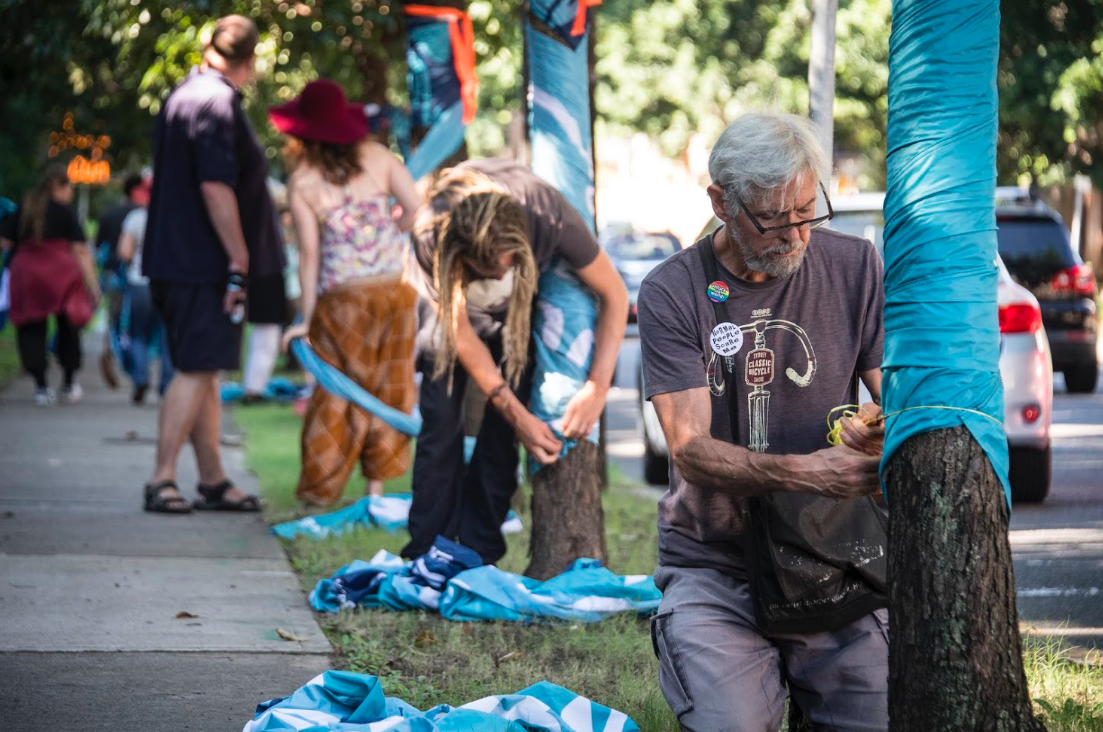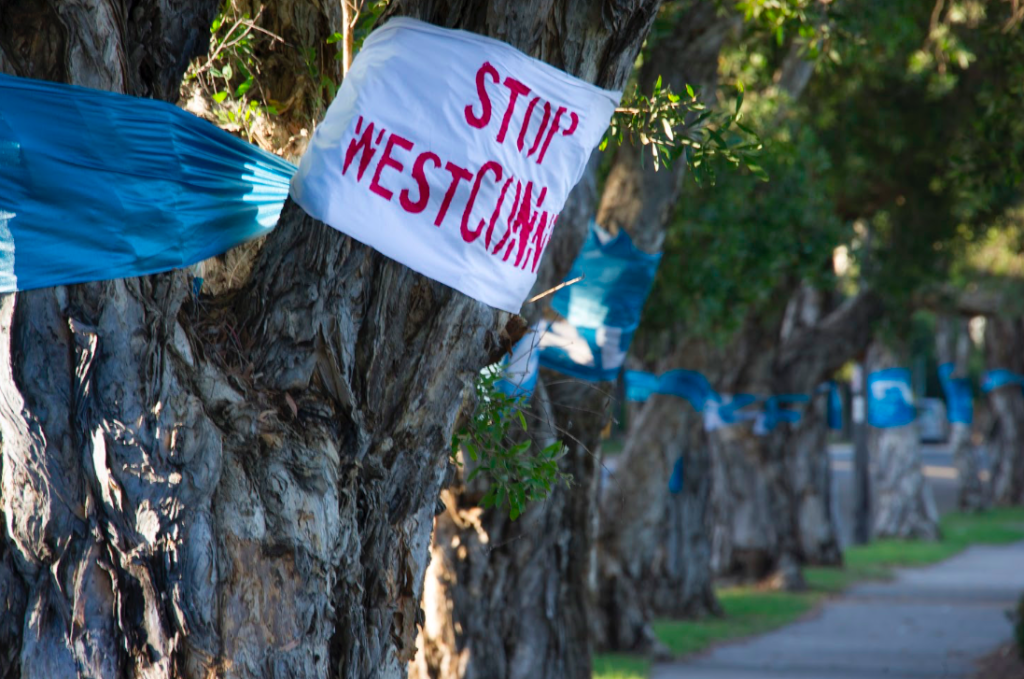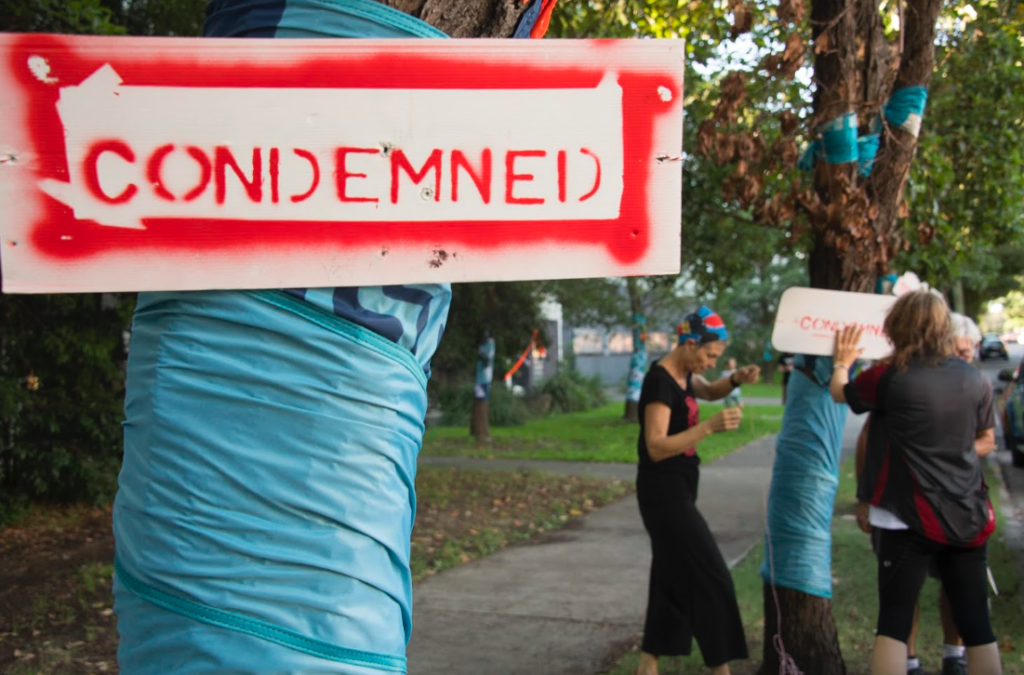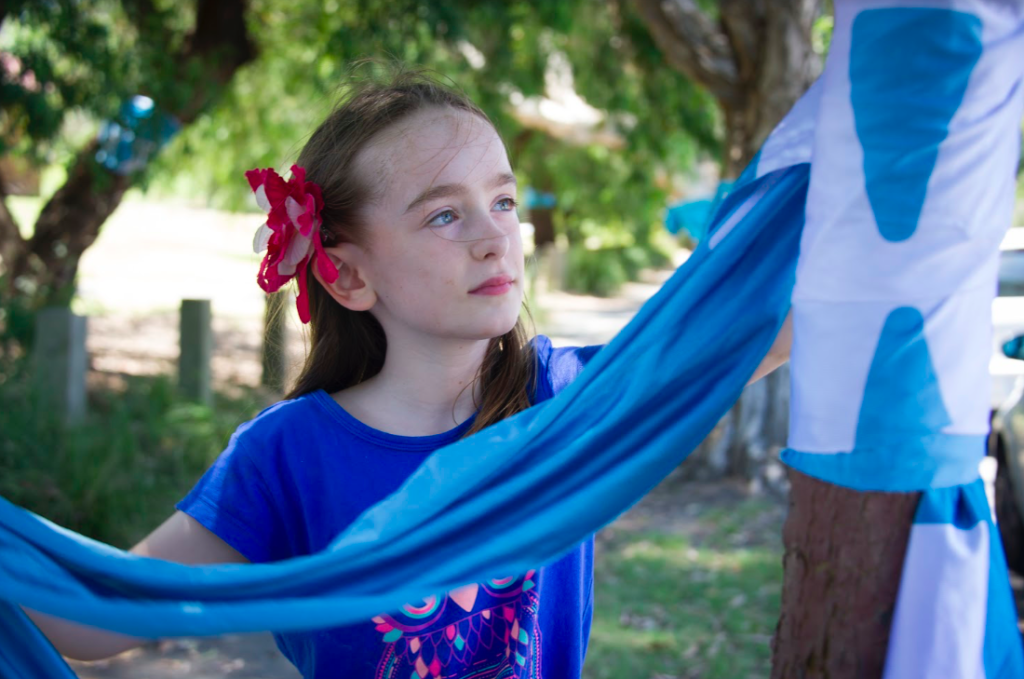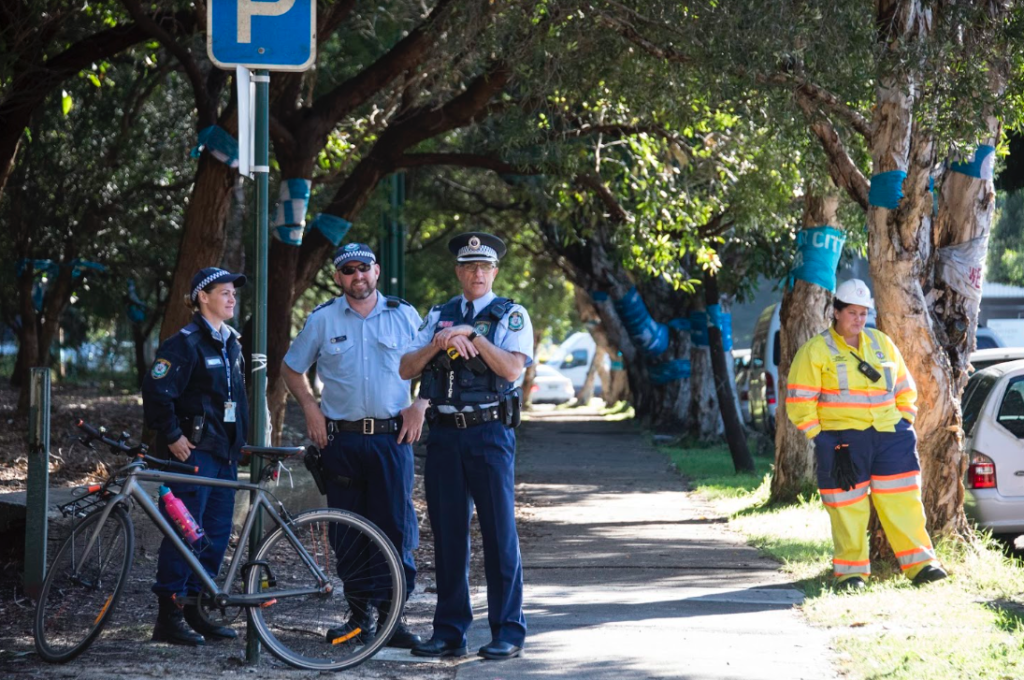by Amber Jones
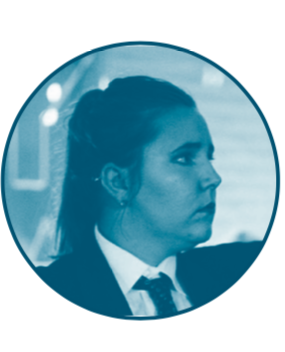
Amber is an interdisciplinary performance artist, theatre-maker, and journalist
IMAGES: Tree wrapping campaign run by Save Newtown from WestCONnex to try and save as many trees targeted for destruction and replaced by a tollway. Credit and copyright Lorrie Graham
Lorrie Graham is a photojournalist. And a bloody talented one at that. I had the pleasure of sitting down with her to discuss her work, why photojournalism isn’t recognised within major arts institutions, and why without institutional support we are in danger of losing our digital archives.
Lorrie Graham broke the glass ceiling in the 1970s when appointed to a photographic cadetship at The Sydney Morning Herald. Dozens of women followed her in years to come. Lorrie’s work has appeared in most of the greatest international newspapers and magazines, and features across all Fairfax titles in Australia.
Having combatted an alarming amount of sexism and hostility, Lorrie went on to work for The Observer in London, Rolling Stone magazine, and The National Times.
Over the last 40 years she has photographed former Australian Prime Ministers Bob Hawke, Paul Keating, and John Howard, and collaborated with creatives such as Andy Warhol, Barry Humphries, Cate Blanchett and an overwhelming number of other notable figures. But Lorrie is a significant player in her own right through photojournalism that features a strong social conscience, an eye for detail, and masterfully constructed visual storytelling.
But why isn’t the work of photojournalists recognised within major arts institutions? She invited me into her home to reflect on these concerns.
Lorrie’s work has actually been collected by the National Gallery of Australia, the National Portrait Gallery, the National Library, the Museum of Sydney and the State Library of NSW. She makes it clear that her intention isn’t to bitch about not being collected, and admits she’s been one of the lucky few in that sense.
“Photojournalism is such a specific and incredibly important area that I don’t think has been recognised by institutions to the degree that it needs to be”, Lorrie says.
Lorrie’s concern stems from the fact that international photojournalists are recognised while the abundance of talent to be found in our own backyard is ignored.
Why aren’t more Australian photojournalists represented within our major galleries and institutions? Photojournalists play a fundamental role in contributing to media coverage, they drive visual storytelling. So why aren’t their images deemed art worthy?
It seems that purely “aesthetic” modes of photography are valued more than utilitarian approaches to imagery. Perhaps an image is deemed art worthy from an institutional standpoint only when it shows signs of interpretation by an “artistic” sensibility? But this is a false distinction which does not acknowledge the creativity and social engagement involved in producing “factual” photographs.
Lorrie added that it might also stem from the idea that photojournalism is a form of employment outside the art world so art institutions may not attempt to see beyond its commercial use.
“They don’t see the worth in it because it’s in their face and they can’t separate it out. And there’s no curiosity about it. I don’t think there’s a great deal of exploring of photojournalism by the art world” Lorrie says.
But when I reflect on some of the images that have resonated with me in the past, they are all the work of talented photojournalists.
“Photojournalism embodies all those elements that are really important in people’s placement of memory, placement of time, placement of huge events that have happened in the world,” Lorrie says.
She also notes that frequent photographic competitions might perpetuate a belief that there are plenty of opportunities for photographers to establish their reputations and gain exposure. Social media platforms such as Instagram are also useful, opening opportunities for collaboration and community engagement.
“I think there is a huge plus in social media now. And you can almost circumvent the big institutions”, Lorrie says.
These social media platforms allow emerging artists, creatives, and photojournalists alike a means of connectivity that was not present when Lorrie had began her own career. Lorrie has her own blog where she regularly posts, focusing on women over 50. “The reason I do that is because I’m passionate about women not being seen after a certain age for what they are. And also, being recognised for what they’ve done”.
She has also been using her photography in local activism. She says on the WestConnex Action Group blog, “I’ve been documenting the Stop WestCONnex campaign since early 2015, when I first became aware of the devastating impact this tollway would have on our communities. Later that year, my husband Greg and I started a group called Save Newtown from WestCONnex.”
The group even used wrapping as an activist tool to draw attention to trees in Sydney Park that WestConnex was about to destroy. “So we found some recycled material in the same colour as the WestCONnex branding and began to wrap the condemned trees in and around Sydney Park. We let people know that if you see a blue ribbon, that tree is dead, gone, destroyed unless we take action to stop WestCONnex.”
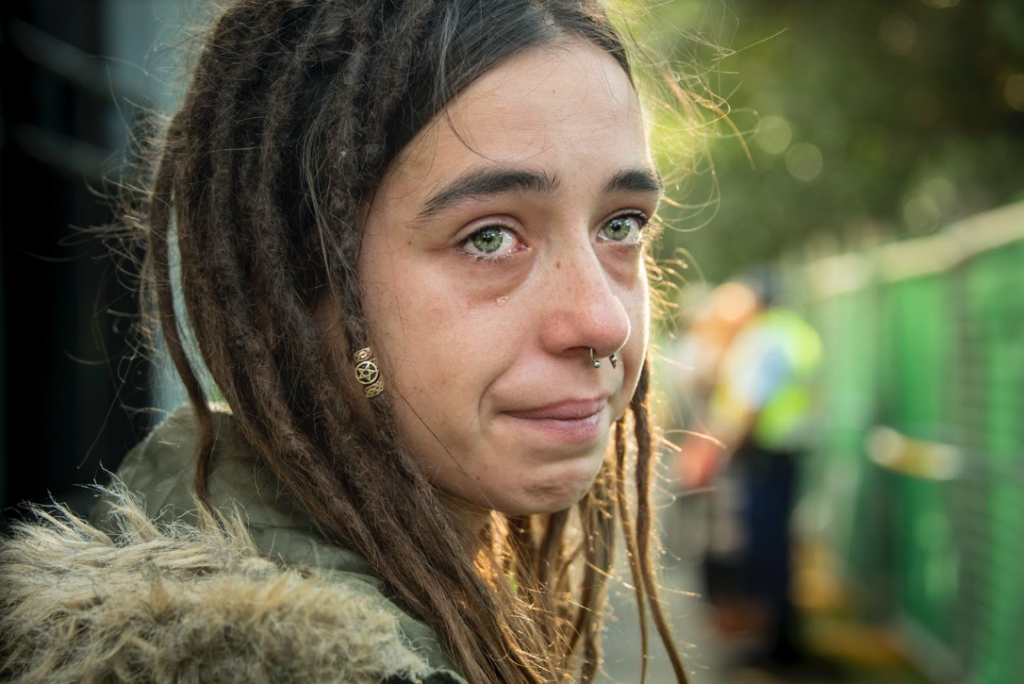
In our conversation, one of the concerns that Lorrie also stressed was the problems inherent in preserving digital imagery. Lorrie predicts that we won’t be left with an archive of imagery.
“So where is the archive of the future?” Lorrie says.
The past is being neglected and now it’s slowly disappearing. Institutions need to ensure that our history is being preserved, which means allowing for storage capacity of RAW files and funding to support the care of our digital archival material. Hopefully this might lead to the recognition photojournalists deserve for their contribution to media coverage, and their capacity to produce and compose artful interpretations of the world we live in.

